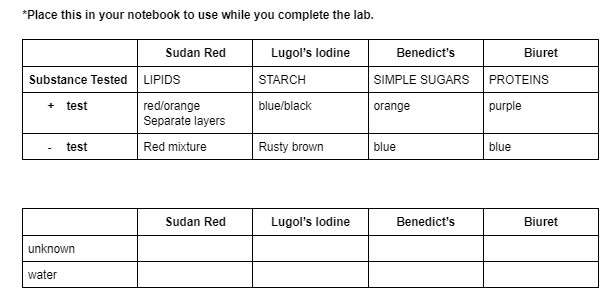Pt 4 Biomolecules: Proteins, Lipids, and Nucleic Acids
- Meredith Townsend
- Jul 31, 2022
- 3 min read
If you haven't read Parts 1-3, basically we spent time going over monomers, polymers, dehydration synthesis, and hydrolysis. We dug deep into carbohydrates, modeling bonding with an activity that uses marshmallows and toothpicks.
Time is never on our side when teaching, so after that we spend only about 2-3 days on the rest of the biomolecules: proteins, lipids, and nucleic acids. We want to do a quick intro into the monomers of each and the functions of the polymers. Again, we hit all 3 of these all year long and so these will all get spiraled back in. We finish the unit with a biomolecules lab, where they learn to test for all of the biomolecules. This one is always a hit with the students. I have linked everything below.
Proteins
Ok, I use this "worksheet" to have students walk through the protein notes on their own, then we go over them. If you use POGILS, it feels very much like that. It was put together using a lot of different random worksheets that I've had over the years. You can get it HERE. It's pretty basic. The rest of the unit moved pretty fast and furious, so this is a bit of a slower-paced lesson. I usually start off with a video to introduce proteins, or show one after we wrap up the notes portion.
Lipids
Here are the basic notes we take over lipids.



It's nothing special, just your basic direct instruction day. If there is time, sometimes I have had kids read an article on "good" fat vs "bad" fat. You could also show a video or have them continue making models of lipids---showing the differences in saturated vs unsaturated. We usually don't have time and move on.
Nucleic Acids
This is probably the one we spend the least amount of time on, because in our Cell Cycle unit we hit DNA structure big time when we do DNA replication. Usually I just provide a coloring sheet, and we look at what nucleotides are made of and then kids color the worksheet and answer questions. I can't post the one I use, it is copyrighted, but a quick google search will get plenty of hits.
Biomolecules Lab
First, we spend a day learning about HOW to test for each biomolecule. Each station has a negative control (water) and a food source that will test positive. So for example, for proteins students test water (negative control) and egg whites for proteins. We do this for each test. Below is the chart kids put in their notebook.

Then comes Murder and a Meal lab. Ok, this one you gotta do big! I love dressing up for it, setting a scene, putting a tape outline of a body...the whole works. I usually do something really dramatic and theatrical to set the stage...but do what you feel comfortable with, the kids appreciate it no matter what you try. Here's a picture from a few years ago...I usually get a bit extra as the years go on.

Basically the gist of the lab is that there has been a murder and if the kids can figure out where the victim ate, then they can find out who killed him. So I pick 3 restaurants that are in our area, make up what the victim usually eats at each one, then students test his stomach contents for biomolecules. Then they figure out which restaurant it coincides with. The stomach contents are made of blended up food....made to get the results I want the kids to get. Here are the directions and the student answer document.
Part 5, reviewing and games with biomolecules, coming soon!
Happy Teaching!
Mrs. Townsend



Comments